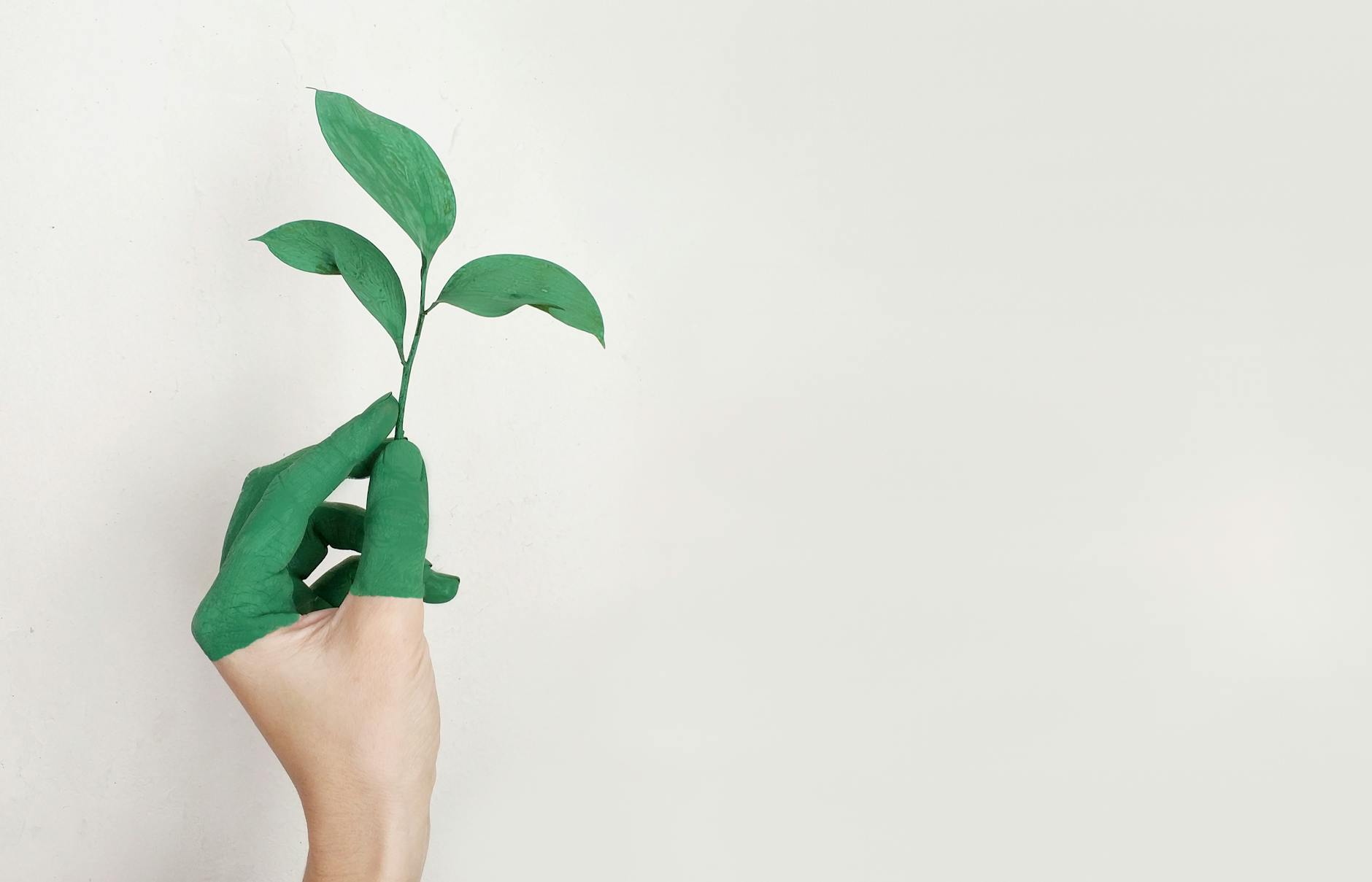Tickling those ivories isn’t just about playing melodies on a piano – it’s about building strength and agility in those nimble fingers too! Young piano players, it’s time to take your skills to the next level with these 7 fun finger exercises. Don’t worry, it’s not like lifting weights or running laps. These exercises are all about having a blast while improving your piano skills. So, get comfortable at your piano bench, flex those fingers, and let’s dive into this musical workout!
Warm-Up Wonders
Before diving into the magical world of playing the piano, it’s important for young pianists to warm up their fingers, hands, and wrists. Just like athletes warm up before a game, musicians need to prepare their bodies for an optimal performance. In this section, we’ll explore some warm-up wonders that will get those fingers ready to tickle those ivories!
Finger Stretches
 Man Standing Beside Woman Doing Exercises (Photo by Liliana Drew)
Man Standing Beside Woman Doing Exercises (Photo by Liliana Drew)
Let’s start with some finger stretches to help limber up those digits. Begin by placing your hands flat on a table or any solid surface. Gently spread your fingers apart as wide as you can, then slowly bring them back together. Repeat this movement several times, feeling the stretch in your hand and fingers.
Next, try a simple finger roll. Start by curling your fingers into a loose fist and then slowly uncurl them, extending your fingers as far as they can go. Repeat this motion a few times, paying attention to each finger’s movement. This exercise will help increase flexibility and dexterity in your fingers, making them more agile on the keys.
Hand and Wrist Circles
 Close-Up Photo of a Woman Stretching Her Wrist (Photo by Kindel Media)
Close-Up Photo of a Woman Stretching Her Wrist (Photo by Kindel Media)
Now, let’s give our hands and wrists some love with hand and wrist circles. Extend your arms in front of you with your palms facing the ground. Begin by making gentle circular motions with your wrists, rotating them clockwise for a few rotations. Then, switch to counterclockwise rotations. This exercise helps to loosen up the muscles and joints in your hands and wrists, reducing the risk of strain or injury while playing.
After the wrist circles, let’s move on to hand circles. Make a fist with both hands and rotate them in a circular motion, starting from the wrists. Again, rotate clockwise for a few rotations and then switch to counterclockwise. This exercise targets the larger muscles in your hands and promotes blood flow, which is essential for optimal performance.
Remember, warming up is not only important for preventing injuries but also for enhancing your overall playing experience. These finger stretches and hand and wrist circles will prepare your muscles, joints, and tendons for the intricate movements required to play the piano. So take a few minutes before each practice session to warm up and get ready to unleash your musical talents!
For more information on piano warm-up exercises and techniques, check out this helpful resource that offers a variety of warm-up exercises tailored specifically for pianists.
Stay tuned for the next section, where we’ll explore some exciting finger exercises that will make practicing the piano even more fun and engaging!
Finger Fitness Frenzy
Do you want to take your piano playing skills to the next level? Well, get ready for a Finger Fitness Frenzy! These fun finger exercises will help young piano players improve their dexterity, strength, and coordination. So, let’s dive right in and get those fingers moving!
Spider Walk
 Person’s Left Hand Holding Green Leaf Plant (Photo by Alena Koval)
Person’s Left Hand Holding Green Leaf Plant (Photo by Alena Koval)
First up, we have the Spider Walk. This exercise is like a mini workout for your fingers! Start by placing your hands on a flat surface, like a table or piano keyboard. Then, slowly lift one finger at a time, starting with your pinky, and place it back down. Repeat this movement with each finger, making your way up to your thumb. It’s like your fingers are going for a stroll, just like a spider crawling up a wall! This exercise is great for warming up your fingers and getting them ready to play those piano keys.
Thumb Wrestling
 Hand Holding in Close Up (Photo by Batuhan Kurt)
Hand Holding in Close Up (Photo by Batuhan Kurt)
Next, let’s have some fun with Thumb Wrestling! No, we aren’t talking about the traditional thumb wrestling game you play with a friend. This is a thumb wrestling match against yourself! Place your hands on a flat surface, with your palms facing down. Now, make a fist with both hands and extend your thumbs. Press your right thumb against your left thumb, and try to push them apart. Hold for a few seconds, then switch sides. This exercise helps strengthen your thumb muscles, which are crucial for playing those powerful bass notes.
Octave Jumps
 Nurse Smiling while Looking at a Doctor (Photo by RDNE Stock project)
Nurse Smiling while Looking at a Doctor (Photo by RDNE Stock project)
Place your hands on the keyboard, starting with your pinky on the lowest note of an octave. Play that note, then quickly jump up to the highest note of the same octave with your thumb. Repeat this motion, going back and forth between the low and high notes of the octave. As you get more comfortable, try increasing the speed of your jumps. This exercise will not only improve your finger coordination but also help you get familiar with the keyboard’s range.
Remember, practice makes perfect! Incorporating these finger exercises into your daily piano routine will help you build strength, flexibility, and control in your fingers. So, why wait? Tickle those ivories and let the Finger Fitness Frenzy begin!
Keep in mind that these exercises are just a starting point. If you want to explore more finger exercises or learn about proper hand positioning, check out websites like PianoMarvel^1 and Hoffman Academy[^2]. They offer valuable resources for young piano players, including tutorials, exercises, and tips from experienced musicians.
[^2]: Hoffman Academy
Melody Magic
Are you ready to unlock the secrets of melody magic? In this section, we will explore two essential finger exercises that will enhance your piano playing skills and help you create beautiful melodies. So, let’s dive in and tickle those ivories with some musical fun!
Five-Finger Scale
 Person Playing Electric Piano in Grayscale Photo (Photo by Stephen Niemeier)
Person Playing Electric Piano in Grayscale Photo (Photo by Stephen Niemeier)
First up, we have the five-finger scale, a fantastic exercise that will familiarize you with the different notes on the piano. This exercise is like a musical journey where you’ll be using all five fingers to ascend and descend the keyboard. Starting with your thumb on C, play C, D, E, F, and G sequentially going up and then back down. Repeat this pattern a few times until you feel comfortable with it.
The five-finger scale is a fundamental exercise that helps develop finger strength, dexterity, and coordination. As you practice this exercise, you’ll notice how your fingers become more nimble, allowing you to effortlessly glide across the keys. Remember to maintain a relaxed hand position and play with a light touch to achieve a smooth sound.
If you’re curious to learn more about scales and their importance in music theory, check out this link to deepen your knowledge.
C Major Arpeggio
Now, let’s add some magic to your playing with the C Major arpeggio. An arpeggio is a series of notes played one after another, forming a broken chord. The C Major arpeggio is a beautiful sequence of the C, E, and G notes, played in that order. Start with your thumb on C, then play E with your middle finger, and finally, G with your pinky finger.
Playing arpeggios not only enhances your finger coordination but also helps you understand the harmonic structure of music. It’s like painting a rainbow of sound, where each note blends seamlessly into the next. As you practice this exercise, experiment with different dynamics, playing softly and gradually increasing the volume for a captivating effect.
To explore more about arpeggios and their role in creating captivating melodies, click here for additional information.
With the five-finger scale and the C Major arpeggio under your belt, you’re well on your way to becoming a melody magician on the piano. These exercises will not only improve your technical skills but also unleash your creativity as you explore the vast world of music.
Remember, practice makes perfect, so set aside a few minutes each day to work on these finger exercises. Soon enough, you’ll be playing enchanting melodies that will captivate everyone around you. Stay tuned for more fun finger exercises in the next section!
Now, let’s take a moment to appreciate the magic of music and continue on our musical journey.
Rhythm Ramblers
If you want to add some pizzazz to your piano playing, look no further than the Rhythm Ramblers! These fun finger exercises will help young piano players develop their rhythm and coordination skills while having a blast. So, let’s dive right in and explore two exciting exercises: Clap It Out and Tap Dance.
Clap It Out
 Woman Pointing Image on Laptop Screen (Photo by Gustavo Fring)
Woman Pointing Image on Laptop Screen (Photo by Gustavo Fring)
Clap It Out is a fantastic exercise that will get those fingers moving and grooving to the beat. It’s a simple yet effective way to improve your rhythm and timing. Here’s how you can get started:
- Sit at your piano and choose a simple melody or a piece you’re currently working on.
- Begin by clapping the rhythm of the music with your hands. Pay attention to the timing and try to match the beat as closely as possible.
- Once you feel comfortable clapping the rhythm, transfer it to the piano. Play the melody using your fingers, maintaining the same rhythm you clapped.
- Repeat this exercise with different songs and rhythms to challenge yourself and further develop your finger dexterity.
Remember, the goal is to train your fingers to move in sync with the rhythm, so don’t be afraid to start slowly and gradually increase the tempo as you become more confident. Before you know it, you’ll be playing with flair and precision!
Tap Dance
 Man in Black Pants and Black Brown and White Low Tops (Photo by Matthias Zomer)
Man in Black Pants and Black Brown and White Low Tops (Photo by Matthias Zomer)
Tap Dance is another delightful exercise that will spice up your piano practice routine. This exercise combines the art of tap dancing with piano playing, giving you a unique way to improve your finger control and timing. Here’s how you can incorporate some fancy footwork into your piano practice:
- Find a small, hard surface like a wooden board or a laminate floor.
- Put on a pair of tap shoes or any shoes that make a distinct sound when you tap.
- Stand on the hard surface and begin tapping your feet to the rhythm of a song you’re familiar with. Focus on maintaining a steady beat and syncing your taps with the music.
- Now, sit back at the piano and play the melody while tapping your feet on the hard surface. Try to coordinate the taps with the notes you’re playing.
- Experiment with different rhythms and patterns, challenging yourself to sync your footwork with more complex melodies.
By incorporating tap dancing into your piano practice, you’ll not only enhance your finger coordination but also add a touch of flair to your performance. Plus, it’s a whole lot of fun!
So, don’t be afraid to unleash your inner Rhythm Rambler and get those fingers tapping and clapping to the beat. These exercises are an excellent way to liven up your piano practice sessions while sharpening your skills. Keep practicing, and soon you’ll be dazzling audiences with your rhythmic prowess!
[Anchor Text: Improve your finger dexterity]
Tickle Those Ivories: 7 Fun Finger Exercises for Young Piano Players
Section: Speedy Fingers
Do you want to see those little fingers dancing across the piano keys with lightning-fast speed? Well, you’re in luck! In this section, we’ll explore two exciting exercises that will transform your young pianist into a finger-speed superstar. Get ready to ignite their passion for playing and watch their fingers fly!
Hanon Exercises
 Silhouette Of A Person On A Swing (Photo by Asad Photo Maldives)
Silhouette Of A Person On A Swing (Photo by Asad Photo Maldives)
First up, we have the legendary Hanon exercises. These exercises have been around for ages and are a favorite among piano teachers and students alike. Designed specifically to improve finger dexterity and speed, Hanon exercises consist of a series of repetitive patterns that target different finger combinations.
By practicing these exercises regularly, your young pianist will develop strength, coordination, and the ability to play complex pieces with ease. The best part? They’ll have a blast doing it! Each exercise is like a mini-game, challenging their fingers to move quickly and efficiently.
To get started, have your child warm up their hands with a few gentle stretches. Then, dive into the Hanon exercises, starting with the easier ones and gradually progressing to more challenging patterns. Encourage them to stay focused and maintain a steady tempo as they work their way through the exercises.
Remember, consistency is key. Just a few minutes of Hanon exercises each day will yield incredible results over time. So, let’s get those fingers moving and grooving!
Scale Races
 Close-Up Photography of Pink Flowers (Photo by Irina Iriser)
Close-Up Photography of Pink Flowers (Photo by Irina Iriser)
Ready to add some friendly competition to your piano practice sessions? Introducing the thrilling world of scale races! This exercise is not only a fantastic way to improve finger speed, but it also adds an element of excitement to the learning process.
To begin, choose a scale that your young pianist is currently practicing. It could be the C major scale, the G minor scale, or any other scale they are comfortable with. Now, here’s where the fun begins!
Set a timer or use a metronome to establish a steady beat. Challenge your child to play the scale as quickly as possible while maintaining accuracy. The goal is to beat their previous record with each attempt. As they get better, you can introduce additional scales or even create mini-scale races against friends or siblings.
Scale races not only improve finger speed but also help your child develop a strong sense of rhythm and timing. Plus, the thrill of trying to beat their own personal record adds an element of motivation that will keep them coming back for more.
So, let’s rev up those engines and get ready for some scale racing action!
Stay tuned for the next section of our article where we’ll explore two more finger exercises guaranteed to make piano practice a ton of fun! In the meantime, keep those fingers limber and let the music flow!
Conclusion
In conclusion, tickling those ivories is not just about playing beautiful melodies, it’s also about keeping those little fingers strong and nimble. These 7 fun finger exercises for young piano players are a great way to make practicing feel like playtime! From finger taps to spider crawls, these exercises will help improve dexterity and coordination, ensuring that your young pianist can rock those keys with confidence. So go ahead, incorporate these exercises into your daily piano practice routine and watch those tiny fingers become piano-playing powerhouses! Happy tickling!
